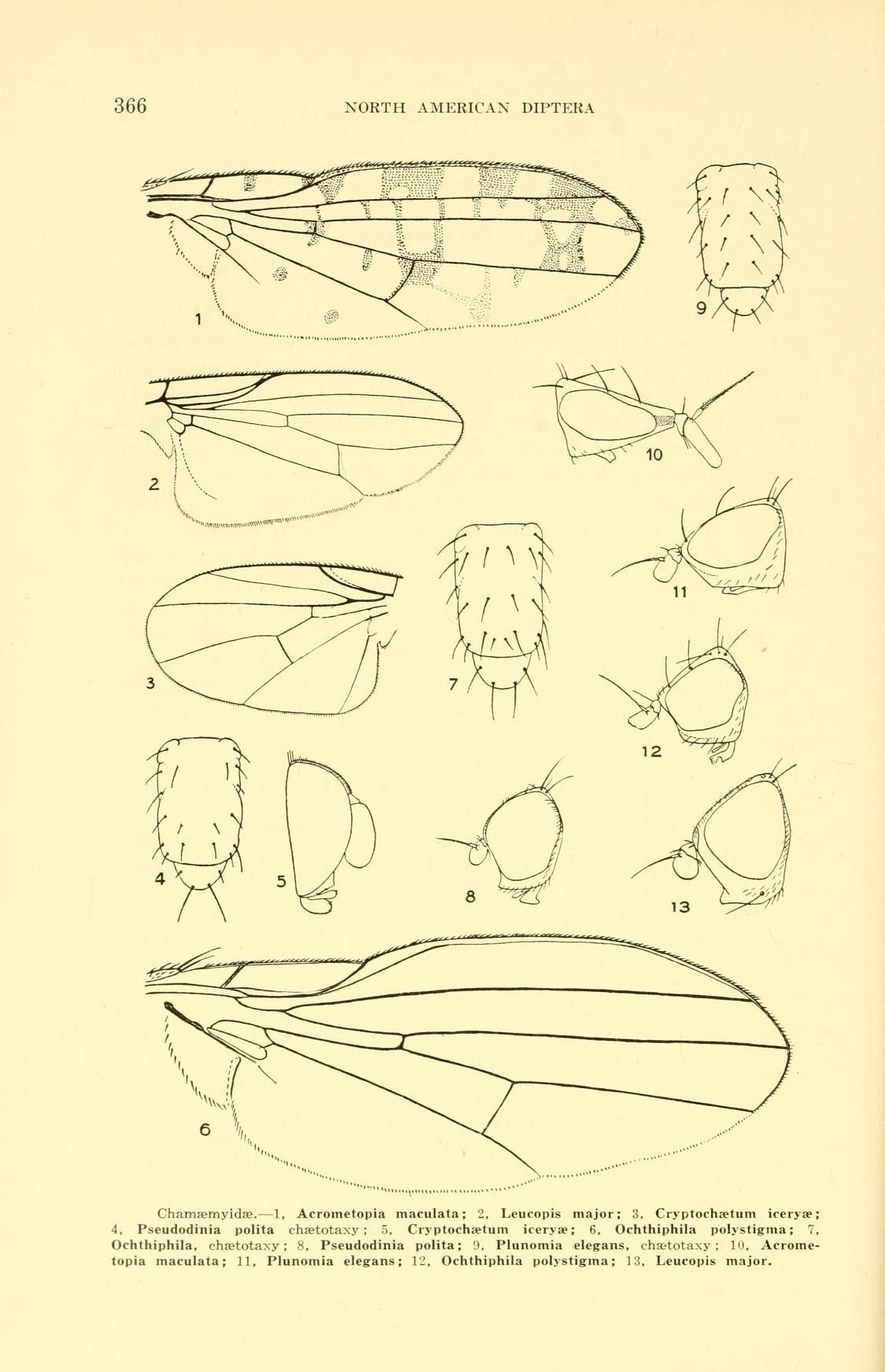|
Lipoleucopis Praecox
''Lipoleucopis'' is a genus of flies belonging to the family Chamaemyiidae The Chamaemyiidae are a small family of acalyptrate flies with less than 200 species described worldwide. The larvae of these small flies are active and predatory and are often used for biological control of aphids, scale insects, and simi .... The species of this genus are found in England. Species: * '' Lipoleucopis praecox'' Meijere, 1928 * '' Lipoleucopis pulchra'' Raspi, 2008 References Chamaemyiidae {{lauxanioidea-stub ... [...More Info...] [...Related Items...] OR: [Wikipedia] [Google] [Baidu] |
Flies
Flies are insects of the Order (biology), order Diptera, the name being derived from the Ancient Greek, Greek δι- ''di-'' "two", and πτερόν ''pteron'' "wing". Insects of this order use only a single pair of wings to fly, the hindwings having evolved into advanced mechanosensory organs known as halteres, which act as high-speed sensors of rotational movement and allow dipterans to perform advanced aerobatics. Diptera is a large order containing more than 150,000 species including horse-flies, crane flies, hoverflies, mosquitoes and others. Flies have a mobile head, with a pair of large compound eyes, and mouthparts designed for piercing and sucking (mosquitoes, black flies and robber flies), or for lapping and sucking in the other groups. Their wing arrangement gives them great manoeuvrability in flight, and claws and pads on their feet enable them to cling to smooth surfaces. Flies undergo complete metamorphosis; the eggs are often laid on the larval food-source and ... [...More Info...] [...Related Items...] OR: [Wikipedia] [Google] [Baidu] |
Chamaemyiidae
The Chamaemyiidae are a small family of acalyptrate flies with less than 200 species described worldwide. The larvae of these small flies are active and predatory and are often used for biological control of aphids, scale insects, and similar pests. Chamaemyiid fossils are poorly represented in amber deposits, but a few examples are known from the Eocene The Eocene ( ) is a geological epoch (geology), epoch that lasted from about 56 to 33.9 million years ago (Ma). It is the second epoch of the Paleogene Period (geology), Period in the modern Cenozoic Era (geology), Era. The name ''Eocene'' comes ... epoch onwards. Description For terms, see Morphology of Diptera The Chamaemyiidae are small flies 9 (1–5 mm), usually greyish in colour. The frons is wide, with at most two pairs of bristles (often bare). The face is gently concave or strongly receding. Oral vibrissae are absent and the postvertical bristles are convergent or absent. The proboscis is short and th ... [...More Info...] [...Related Items...] OR: [Wikipedia] [Google] [Baidu] |
Lipoleucopis Praecox
''Lipoleucopis'' is a genus of flies belonging to the family Chamaemyiidae The Chamaemyiidae are a small family of acalyptrate flies with less than 200 species described worldwide. The larvae of these small flies are active and predatory and are often used for biological control of aphids, scale insects, and simi .... The species of this genus are found in England. Species: * '' Lipoleucopis praecox'' Meijere, 1928 * '' Lipoleucopis pulchra'' Raspi, 2008 References Chamaemyiidae {{lauxanioidea-stub ... [...More Info...] [...Related Items...] OR: [Wikipedia] [Google] [Baidu] |
Lipoleucopis Pulchra
''Lipoleucopis'' is a genus of flies belonging to the family Chamaemyiidae. The species of this genus are found in England. Species: * ''Lipoleucopis praecox ''Lipoleucopis'' is a genus of flies belonging to the family Chamaemyiidae The Chamaemyiidae are a small family of acalyptrate flies with less than 200 species described worldwide. The larvae of these small flies are active and predatory a ...'' Meijere, 1928 * '' Lipoleucopis pulchra'' Raspi, 2008 References Chamaemyiidae {{lauxanioidea-stub ... [...More Info...] [...Related Items...] OR: [Wikipedia] [Google] [Baidu] |

